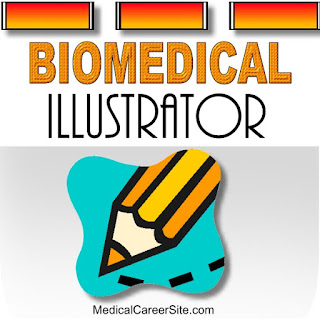Biomedical illustrators create visual material to facilitate the recording and disseminating of medical and biological knowledge. Illustrators employ various techniques, including drawing, layout, design, computer graphics, and electronic imaging.
Biomedical illustrator creates surgical and anatomical drawings, visuals for educational films, and artwork for brochures and posters. The illustrator may be expected to create models of body parts. Biomedical illustrators sometimes work with biomedical photographers.
Biomedical illustrators works in larger hospitals, universities and health science schools (such as schools of medicine, dentistry, and veterinary medicine), pharmaceutical companies, medical publishers, research institutes, and advertising agencies, as well as free-lance studios.
As the medical field grows, so will the need for skilled illustrators to depict new procedures, techniques and discoveries. Because there are only a few graduate programs in medical illustration, and small graduation classes, medical illustrators will find great demand for their skills.
Entry-level salaries for graduates of medical illustration schools range from $27,000 to $35,000 per year. The average pay for an experienced medical illustrator ranges from $35,000 to $60,000 per year, depending on their location and level of experience. At the high end, they can earn between $90,000 and $120,000 per year.
Biomedical Illustration Training
Five schools in the country offer accredited master’s programs in biomedical illustration: Medical College of Georgia, Augusta; University of Illinois, Chicago; Johns Hopkins School of Medicine, Baltimore, Maryland; University of Michigan Medical Center, Ann Arbor Michigan; and the University of Texas Southwestern Medical Center, Dallas.
Generally, four years of undergraduate study are necessary to gain the required foundation. Preparation for graduate-level study should include a balance of art, premedical biology, and the Humanities in related educational programs.
Eligibility for certification includes graduation from an accredited program in medical and biological illustration or five years experience as a medical illustrator and proof of successful completion of a dissection course in human gross anatomy.
Applicants for certification must successfully complete a national certification exam administered by the Medical Illustrators Board of Certification.
